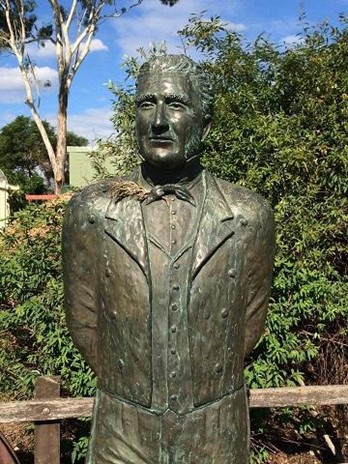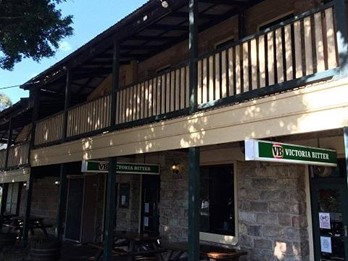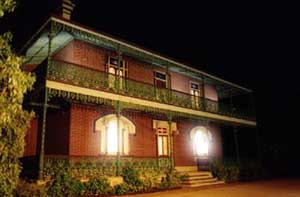
By Murray Byfield
Wisemans Ferry located 75km north-west of the Sydney in the LGA’s of Hornsby Shire, The Hills Shire, City of Hawkesbury and City of Gosford.
Solomon Wiseman of whom the town is named after was an ex-convict who became a very successful businessman after he was pardoned by Governor Macquarie. Born to a respectable family at Cobham in the UK in 1778 he was convicted and sentenced to death for stealing wool from a lighter (a flat bottomed barge) which he was working on at the Thames in London. His sentence was reduced to transportation for life to New South Wales in 1806.
Because of his aristocratic connections Lord Bathurst allowed Wiseman to take his wife and young family with him to New South Wales.
Upon arrival to New South Wales he was given “conditional liberty” which meant his sentence was to be carried out under the supervision of his wife.
With his maritime background built a ship called the “Hawkesbury Packet” which traded in coal from Newcastle, wheat from the Hawkesbury region and timber from Shoalhaven.
Wiseman received a grant of 200 acres of land at which is now Wisemans Ferry. He and his family moved there in 1819 began farming, plus other government contracts. He established the “Sign of the Packet” Inn which is now Wisemans Ferry Inn.
Wiseman quickly became a very successful businessman as an innkeeper, a merchant and of course a ferryman.
In 1827, Wiseman built the ferry at the Hawkesbury River crossing for the Great North Road which was the only overland route to the fertile Hunter Valley at the time. The original site was 2km downstream from its present location but was moved in 1829 when the Devine’s Hill ascent was chosen as the new route for the Great North Road.
Wiseman was granted exclusive rights to the tolls for seven years, subject to an exemption for Government horses and property.
Wiseman was not known for leniency towards his assigned convicts. If he was assigned a good worker Wiseman would provoke a quarrel just before the convict’s ticket of leave was due. Resulting in the assigned servant’s ticket being cancelled forcing the convict to stay longer in his servitude.
He was given the nickname “King of the Hawkesbury” he was known to wear a swallowtail coat, flowery vest, polished boots and a dress sword.
Wiseman died in 1838 at age 62. He was buried in his own grounds next to his wife Jane. He was reinterred first in the Church of St Mary Magdalene, and after that church was damaged by vandals, in the cemetery at Wiseman’s Ferry. Wisemans Ferry remained the principal crossing place for many years, until the opening of the Hawkesbury railway bridge in 1889.
Ghosts

Wisemans Ferry Inn 1827
The Wisemans Ferry Inn is rumored to be haunted by the ghost of Jane Wiseman, stories vary but some believe she was either pushed or fell from the balcony of the inn and died on the steps.
Contradicting this story it appears that Jane Wiseman had died 5 years before the inn was completed. His wife Jane had died on 20 July 1821 after a long illness, leaving him with four sons and two daughters. On 1 November 1826 he married Sophia Warner, the widow of one of his employees at Wilberforce. The inn was once considered the most famous haunted house in Australia.
A story from Windsor and Richmond Gazette 27 January 1928 entitled
“SHADOWY FORMS AT WISEMAN’S” describes the ghostly goings on;
“Several ghosts including women spectres who hurried through the echoing stone rooms and along draughty corridors in trailing gowns, and scared residents swear that they heard the swish, swish of- silken dresses as a woman ran to look over the balcony. Sometimes the rustle was accompanied by a scraping of feet and a faint gasping cry like the coughing of a woman with asthma. The story of the shadowy form that rose from the old vault in the neglected garden and hurried towards the old house is history. Those who tell it argue that the spirit was that of Wiseman’s first wife, and whose nocturnal visits were an attempt to draw public attention to treasure hidden in her bedroom. Several years after the ghost was last seen a box of sovereigns was found under the floor of the old room.
One of the most picturesque legends is the story, of the young convict whose ghost periodically visited the old house to beg a ticket-of-leave of ‘Governor’ Wiseman.
In the twenties and the thirties it was the custom to grant a ticket-of-leave to a convict serving seven years’ sentence if on the expiration of four years of sentence the Convict held a good conduct report. The story goes that a young convict, anxious to see his sweetheart in Sydney, begged Wiseman to give him a permit. This the ‘Governor’ refused and instead put him under a cruel taskmaster who had him chained to the roadmaking gang. He attempted to escape by swimming the river, but his leg-irons hampered him and he was drowned. For years the ghost of the young boy was supposed to come to the house and the clank, clank of his chains sent a shiver, down the spine of travellers who claim to have heard it.
A swagman, who was on his way to Sydney put in at the old house for a night’s camp. Telling of his adventure afterwards he said that he was awakened shortly after midnight by the most, unearthly noises.
The screams of a woman as if she were being choked was followed by the slamming of a door. Footsteps echoed along the stone corridor, and a shadowy form seemed to flit past him.
CLANK OF LEG-IRONS
All was quiet for a while and the troubled swagman turned over and tried to sleep. He could not. The clanking of leg-irons accompanied by the slow halting steps of
a man drove away all attempts at sleep. He sat bolt upright and hearing the clank of metal approaching his room, grabbed his Matilda and fled out of another door. There are dozens of other similar stories. The old house is now a flourishing hotel, and the ghost stories are of the past. Many years have elapsed since the rattle of leg-irons, the rustle of silken garments, and muffled screams and asthma coughs were last heard but the stories are still fresh in the memories of the old inhabitants, as fresh as the grim tales of Old Mangrove are with the fishermen of the Lower Hawkesbury.”

